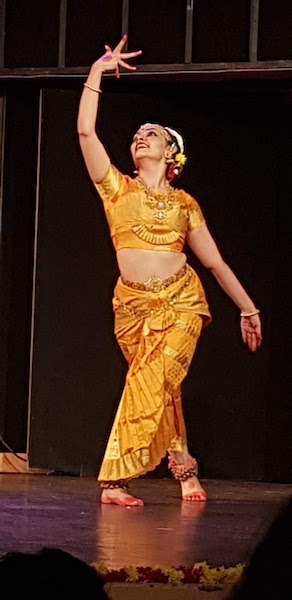As a father of two millennials I am acutely aware of the universe they occupy, caught between two worlds, one dead and the other still in the throes of labour and yet to take final shape. Belonging to the Instagram generation, their lot is not an easy one for they no longer reside in the safe, predictable and familiar world of their parents where relationships were permanent, expectations were reasonable, careers were well defined, needs were limited and the rhythm of life was easy paced. Their present age, on the other hand, is one in which the future is like an all devouring black hole from which nothing escapes; old traditions, principles and values have disappeared; feelings have been replaced with algorithms, the human element has given way to artificial intelligence, true creativity has been substituted with 3D printing and Google search, literature has surrendered to texting, friends have been replaced with Alexa and the only relationships that matter are those of the anonymous and pseudonymous pages of Facebook and Ashley Madison. They are achieving much, yes, but are clueless about where they are headed: having stolen the flame from Olympus they do not know what to do with it.
But what I find most distressing, and sad, is that the millennial generation has almost completely turned its back on its past, that wonderful capital accumulated over the centuries by the interplay of civilisations which we loosely term “culture”- our poetry, dance forms, music, literature – a culture so sublime that it was difficult to separate the human from the celestial. I am not blaming them for this, for the Anthropocene age has no space or time for anything other than annual targets, I-phones and gross turnover. But it is heart breaking nonetheless. Another generation or two and we would have lost for ever the cultural endowment of the ages. But, as I discovered last week at a function in the India Habitat Centre, there may still be a glimmer of hope, a thin sliver of light winking defiantly in the gloom.

Meet Ananya Khosla, a millennial with a difference. This tall, elegant, beautiful young woman is a graduate in Mathematics and an MBA, an environmentalist to boot, working with the multi-national company, Schneider, in Gurgaon. But it is what she does outside of her office hours that makes her special: she is a Kuchipudi dancer who has been pursuing her passion since childhood and has emerged as a leading proponent of this centuries old art form. But what makes her unique for me is not just her divine dancing but the ease and grace with which she has synthesised the two worlds she lives in: the modern and the traditional, the contemporary with the past, the confidence of youth with the devotion of the acolyte. Her discipline and commitment to her chosen passion is remarkable: after a full day at the office she doesn’t repair to the e-cafe or the many parties her peers make a bee-line for, but to the foundation established by her gurus- Drs. Raja, Radha and Kaushalya Reddy for strenuous training and practice. She has been doing this now for twenty years, and obviously she has been doing it well: watching her is to watch poetry in motion, for, in the transliterated words of Robert Frost: poetry is when an emotion has found its thought and the thought has found its dance form.

I know nothing about classical dances and even less about Kuchipuddi, but that is the beauty of art: you come to scoff, but remain to pray. Ananya’s ninety minute solo performance was riveting, her expressions, emotions and movements encompassing the full range of devotion, love, despair and ecstasy. How a 27 year old can capture all this without uttering a word is the wonder of this dance form. The show stopper for me was her fifth item: a sculpted rendition of Amir Khusro’s Sufi song made famous by Abida Parveen and Rahat Fateh Ali Khan- “Chhap Tilak sab chheen lin mohe naina milai ke.” This brilliant fusion of two of the greatest religions and cultures of the world makes a mockery of the politics of the day which ranges them as adversaries. And it makes me wonder whether we have not lost our way somewhere: should we not be promoting this- the culture and art symbolised by Ananya’s dance – as the real face of Indian tradition and achievements, instead of pushing vedic surgery, demolished temples, conversions, Aryan supremacy, pseudo-scientific theories and the unsuspecting cow as the elements that define the splendour of ancient India?
So don’t give up on our millennials, they can still teach us a thing or two and perhaps make us think deeply. And in the meantime keep an eye on this young lady as she builds this much needed bridge between the millenniums and the millennials. You will hear and see much more of her in the days to come.
| The author retired from the IAS in December 2010. A keen environmentalist and trekker he has published a book on high altitude trekking in the Himachal Himalayas: THE TRAILS LESS TRAVELLED.
His second book- SPECTRE OF CHOOR DHAR is a collection of short stories based in Himachal and was published in July 2019. His third book was released in August 2020: POLYTICKS, DEMOCKRAZY AND MUMBO JUMBO is a compilation of satirical and humorous articles on the state of our nation. His fourth book was published on 6th July 2021. Titled INDIA: THE WASTED YEARS , the book is a chronicle of missed opportunities in the last nine years. Shukla’s fifth book – THE DEPUTY COMMISSIONER’S DOG AND OTHER COLLEAGUES- was released on 12th September 2023. It portrays the lighter side of life in the IAS and in Himachal. He writes for various publications and websites on the environment, governance and social issues. He divides his time between Delhi and his cottage in a small village above Shimla. He blogs at http://avayshukla.blogspot.in/ |


